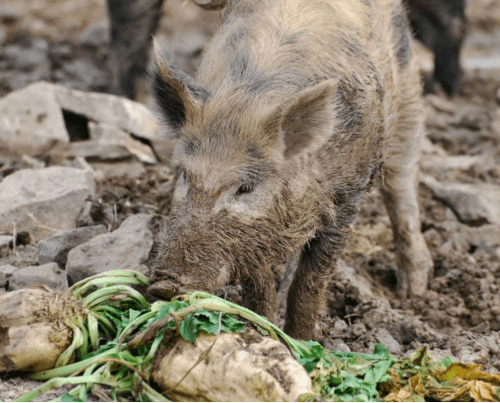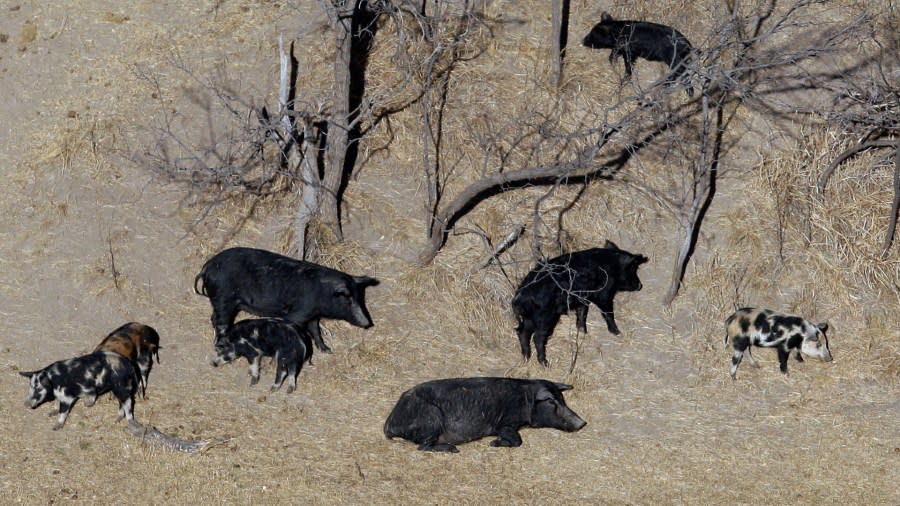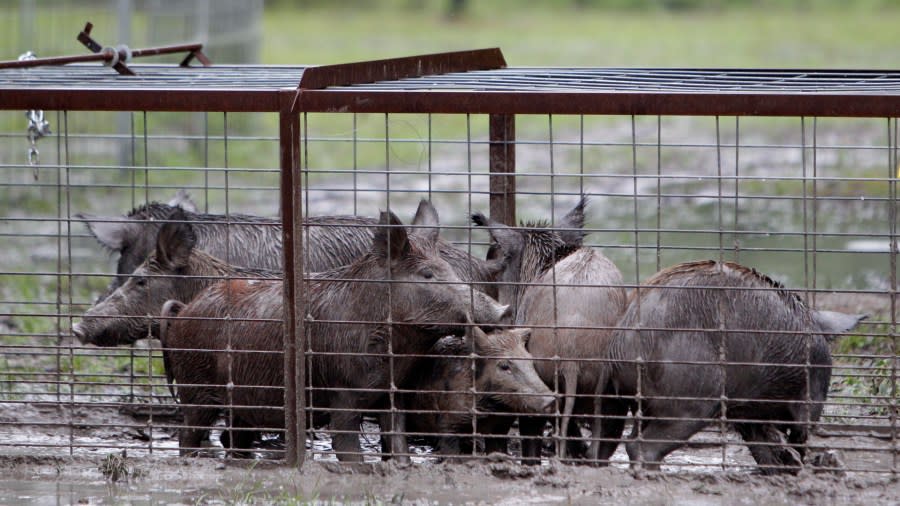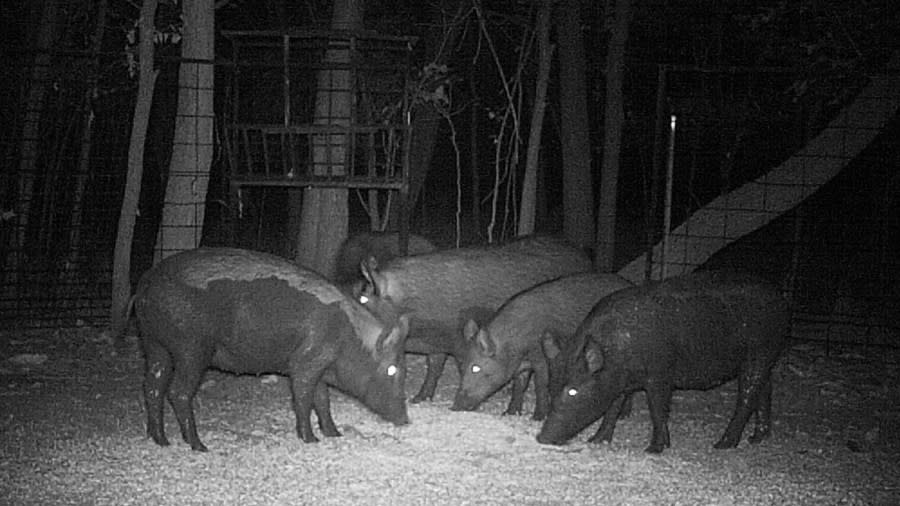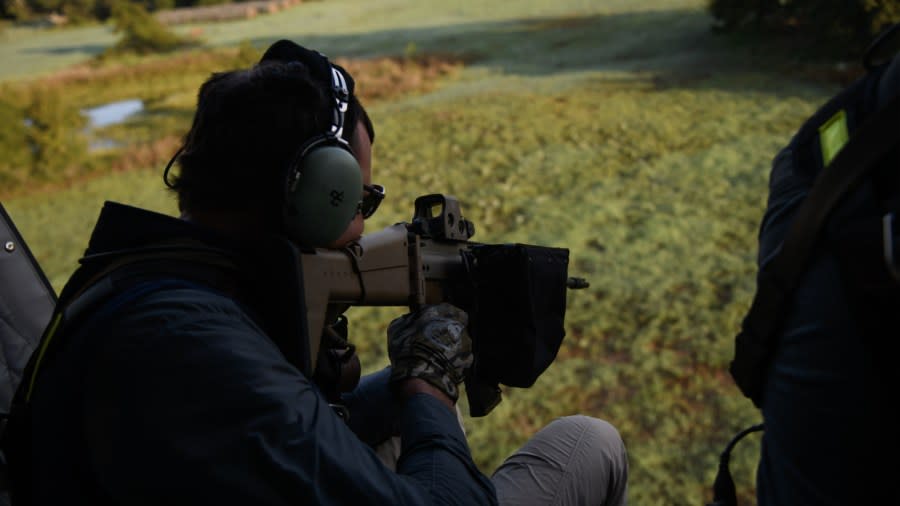No, feral hogs are not taking over Michigan
GRAND RAPIDS, Mich. (WOOD) — West Michigan can breathe easy. No, feral hogs are not knocking down your doorstep to chew up your gardens or overtake your farms.
A report released late last year discussed how the feral hog population is spreading across the United States, stirring up headlines in Michigan that the invasive pest will be the state’s next big problem.
The report was released by Captain Experiences, an online platform to book fishing and hunting trips. Using data from the U.S. Department of Agriculture, Captain says there is some form of feral hog activity in 22 Michigan counties.
Feral swine can certainly be a destructive pest. To quote a 2015 ruling from the Michigan Court of Appeals: “They escape, breed vigorously, spread disease, eat crops, defecate in lakes and genuinely cause ecological mayhem.”
But Tony Duffiney, the Michigan state director for the USDA’s APHIS Wildlife Services, is urging people to take a breath before fortifying the fence around their gardens. He says the population size and where they are found is misrepresented in the data.
“When you go into those maps, you have to look at the date that they are representing, and the majority of the observations from Michigan occurred prior to 2021 and a lot of them were around 2016,” Duffiney told News 8.
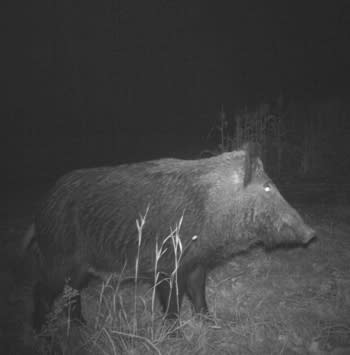
In all, the USDA has confirmed 32 total sightings of feral swine in Michigan since 2016, and only 11 in the last four years.
Also, Duffiney notes that the USDA data does not differentiate between feral swine and escaped domesticated pigs.
“The definition of a feral hog or feral swine is any swine species that is outside of captivity,” Duffiney said. “A lot of what we go look at will be your typical domestic breeds, your Yorkshire, Berkshire (swine). There are a couple of old-world breeds that are pretty highly prized for their meat, and there are a lot of farmers who will let those pigs forage on acorns and hickory and things like that to get the best flavor in the meat. So quite often, when we get a phone call about a feral hog, it’s usually one of these domestic breeds.”
Nationwide, in terms of cracking down on feral swine, the fight is focused on the Russian boar, which were brought over during the 16th century for food. Russian boars look different compared to most pigs. Their snout is longer and narrower and they typically have a dark-colored coat with light-tipped bristles. Unlike domesticated species, Russian boars are much more likely to be aggressive toward humans.
However, all feral pigs have one thing in common: They are voracious eaters and can make a mess of any habitat.
Said Duffiney: “(Hunters) want to do everything on their land to make it as attractive to deer as you possibly can. You may do some habitat work to make it look a little bit thicker for the deer so they are better able to hide. (Hunters) will plant crops for the deer. You may try to keep your oak trees and your hickory trees and your apple trees. You will plant all of these things or you will ensure all of these things are surviving. … Pigs will come in and target all of those food sources and they are a lot more destructive when they feed than white-tailed deer are. All of your habitat work kind of goes out the window when you’ve got pigs on the landscape.”
DNR: Invasive plant found for first time in Michigan
America’s feral swine population is growing quickly, and the animals’ range is expanding because of their adaptability to new climates and a lack of natural predators, but there are no signs the Russian boar is taking over Michigan.
USDA data from 2022 showed feral swine sightings in only five Michigan Counties: Calhoun, Jackson and Kalkaska in the Lower Peninsula and Marquette and Dickinson in the Upper Peninsula.
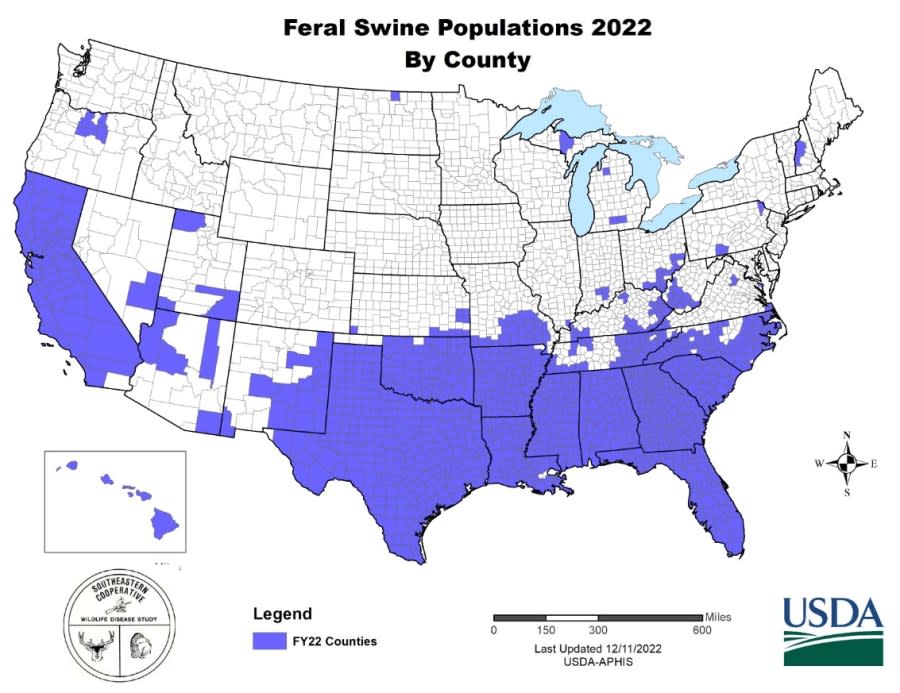
According to Duffiney, the swine found in Jackson and Calhoun County very likely stemmed from a nearby hunting facility.
“We got a phone call one day of an escaped pig. … The animal came from a high-fenced hunting facility. It was taken by one of the employees who supposedly, and I don’t know all of the backstory here, but she wanted to keep it as a pet. She didn’t want it to be hunted,” he explained. “So when she had it, she did not have it secured, it wasn’t in a good fence, and it got out.”
Michigan primed to be next frontier for invasive plant kudzu
For the state’s northern region, Duffiney says most reports are also escaped domestic hogs, but there are confirmed sightings of Russian boar that have escaped from farms and hunting ranches.
“Farmers were raising them up there and they got out. We have had a handful of pigs that I would call feral hogs, and those were in that area. But they disappeared pretty quickly. I think hunters probably got most of them,” he said.
A 2009 file photo of a feral hog feasting on some beets. (Courtesy U.S. Department of Agriculture) A 2009 file photo of a group of feral pigs roaming near a ranch in Texas. (AP file) A 2014 file photo of a group of feral hogs that were trapped near Houston. (Getty Images) A group of feral hogs hit a pile of corn inside a trap set in Cowley County, Kansas. Biologists allow the animals to come and go for several days to get them at-ease with the set-up before letting them trigger the trap. (Getty Images) A customer on a helicopter hog hunting tour near Bryan, Texas, US, on Friday, Oct. 6, 2023. Feral hogs have become one the nation’s most costly invasive species. (Getty Images)
The state of Michigan has been cracking down on Russian boar for more than a decade, trying to get in front of a potentially major problem. In 2010, the Michigan Department of Natural Resourced adopted a measure to ban Russian boar from being legally owned.
Hog farmers and hunting ranch owners have pushed back, claiming their livelihoods are being lost to state oversight. Duffiney believes the threat comes down to how feral hogs will react to being penned up, especially in a hunting facility.
GVSU professors work to save Grand Haven park from trio of invasive pests
“If you have a domestic breed, they think you have got all of the food, all of the water they need, they usually aren’t looking to get out,” Duffiney said. “But if you are behind a high fence and you are being pursued by dogs or hunters or whatever, you are probably looking for a way to get out.”
And therein lies the problem. If the state allows farmers and ranchers to maintain Russian boar, is it only a matter of time before a population establishes itself in Michigan? Before the ban, escaped hogs allowed the feral swine population to balloon to approximately 3,000 across the state in the early 2000s. Since the 2010 order, The Detroit News reports that number is now estimated to be below 1,000.
So what should you do if you see a wild pig? For one, the DNR asks that you file a sighting report through the agency’s website. And second, though there is no designated season for feral swine, as long as you meet some basic qualifications, you can legally hunt them.
The DNR says a Russian boar can be taken on public land by anyone who possesses a valid hunting license or a concealed pistol license, and on private land as long as you have the landowner’s permission.
For the latest news, weather, sports, and streaming video, head to WOODTV.com.
